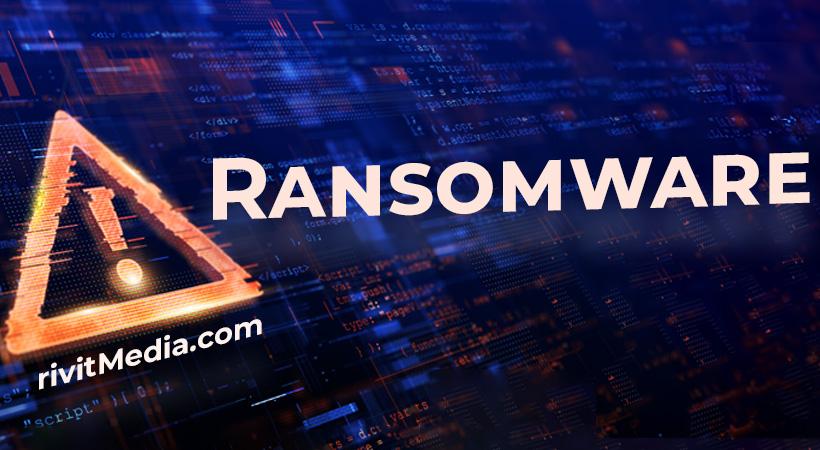Oceans Ransomware has emerged as a formidable cyber threat, causing distress and havoc for users worldwide. This malicious software operates by encrypting files on infected systems, rendering them inaccessible to users until a ransom is paid. With its sophisticated encryption algorithms, Oceans Ransomware poses a significant risk to both individual users and organizations, potentially leading to data loss, financial damage, and operational disruptions.
Actions and Consequences
Once Oceans Ransomware infiltrates a system, it swiftly begins its nefarious activities. It targets a wide range of file types, including documents, images, videos, and more, encrypting them with a strong cryptographic algorithm. This encryption renders the files unreadable without the decryption key, which the attackers withhold until a ransom payment is made. Victims often find themselves in a dilemma, forced to choose between losing their valuable data or succumbing to the demands of the cybercriminals.
Text in the ransom note:
(HACKED BY OCEANS)
Hello 🙂
All of your files have been encrypted!
Your computer/database has been infected with a ransomware virus.
Your files have been encrypted and you won’t be able to decrypt them without our help.What can I do to get my files back?
You can buy our special decryption software, this software will allow you to recover all of your data and remove the ransomware from your computer.
The price for the software is $125,000 USD. Payment can be made in Monero/XMR only.
**IMPORTENT**
DO NOT TRY TO USE ANY THIRD PARTY SOFTWARE OR ELSE YOUR FILES/DATA MAY BE LOST FOREVER!
To get the Monero/XMR address email: anonymous22109@proton.me
If you don’t pay within 48 hours all of your companys data will be leaked.
The consequences of falling victim to Oceans Ransomware can be severe. Not only does it cause immediate disruption by locking users out of their files, but it also poses long-term risks. Organizations may face financial losses, reputational damage, and legal liabilities as a result of compromised data. Additionally, individuals may suffer emotional distress and inconvenience due to the loss of personal files and memories.
Detection Names and Similar Threats
Oceans Ransomware may be detected by various antivirus and cybersecurity solutions under different names, including but not limited to:
- Oceans Ransomware
- Trojan-Ransom.Win32.Oceans
- Ransom:Win32/Oceans
- Win32/Filecoder.Oceans
Similar threats to Oceans Ransomware include other variants of ransomware such as Maze, Ryuk, Sodinokibi, and REvil. These threats share similar characteristics in terms of encryption methods, ransom demands, and evasion techniques.
Removal Guide
Removing Oceans Ransomware from an infected system requires careful steps to ensure complete eradication of the malware. Follow these thorough removal instructions:
- Disconnect from the Network: Immediately disconnect the infected computer from any network, including the internet and local networks, to prevent further spread of the ransomware and to minimize potential damage.
- Enter Safe Mode: Restart the computer and enter Safe Mode. This will limit the functionality of the ransomware and make it easier to remove.
- Identify Malicious Processes: Open the Task Manager (Ctrl + Shift + Esc) and look for any suspicious processes running on the system. Pay close attention to processes consuming high CPU or memory resources.
- Terminate Malicious Processes: End the processes associated with Oceans Ransomware by right-clicking on them and selecting “End Task.”
- Delete Malicious Files: Navigate to the directories where the ransomware is known to reside. Common locations include temporary folders, system directories, and user profile folders. Look for files with suspicious names or recent timestamps and delete them.
- Restore Encrypted Files: If possible, restore encrypted files from backups or use data recovery tools to recover lost data. Do not rely on paying the ransom, as it does not guarantee file recovery and may further fund criminal activities.
- Update Security Software: Ensure that your antivirus and security software are up-to-date to prevent future infections. Run a full system scan to detect any remaining traces of the ransomware.
- Reconnect to the Network: Once you are confident that the ransomware has been removed, reconnect the computer to the network and monitor for any unusual activity.
Prevention Best Practices
To minimize the risk of falling victim to Oceans Ransomware or similar threats in the future, consider implementing the following best practices:
- Keep your operating system and software up-to-date with the latest security patches.
- Use reputable antivirus and antimalware software and keep it updated.
- Exercise caution when opening email attachments or clicking on links, especially from unknown senders.
- Regularly back up your important files to an external storage device or cloud service.
- Enable firewall protection and consider using intrusion detection/prevention systems.
- Educate yourself and your organization about cybersecurity best practices and common attack vectors.
By following these prevention best practices, you can significantly reduce the likelihood of experiencing a ransomware infection and safeguard your valuable data.





